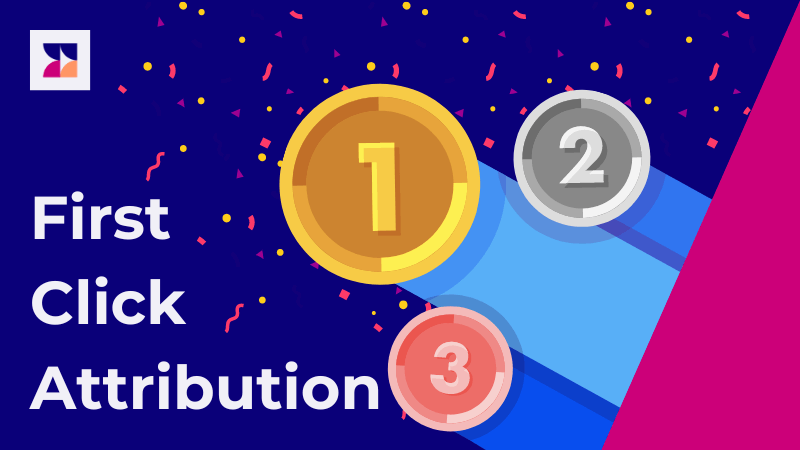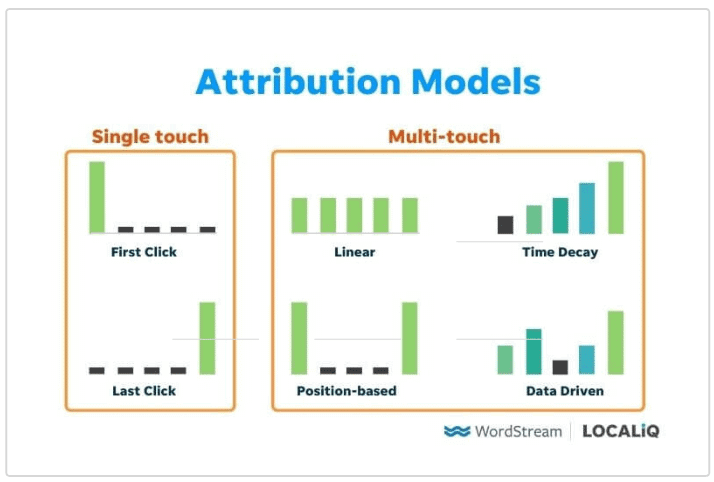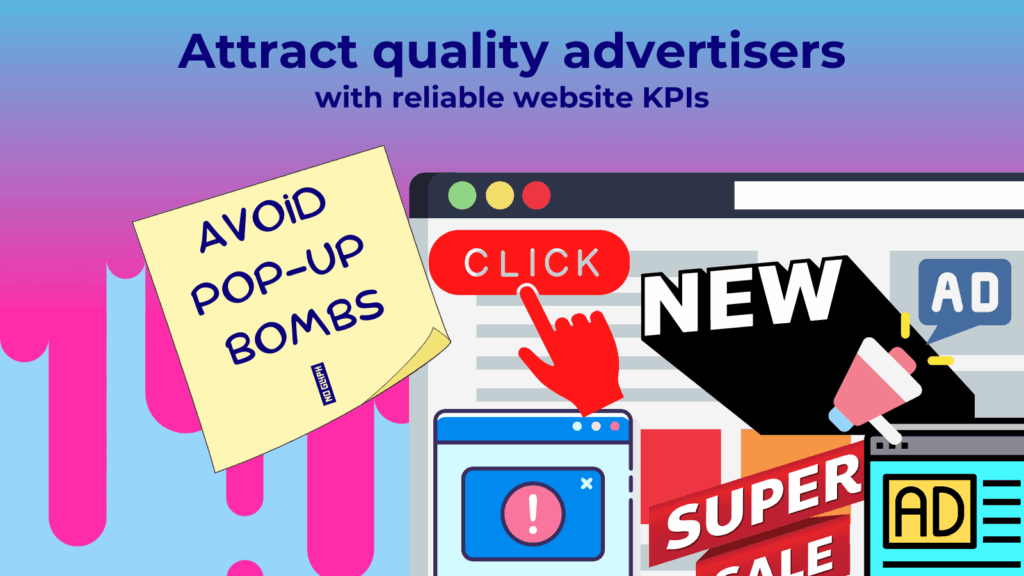The secret to a cost-effective marketing strategy lies inside your website analytics platform. There, you will find click attribution models — metrics you can use to track how your marketing tactics impact the customer journey — from the first interaction to the final purchase.
The most commonly used models include first-click attribution model, last-click attribution model, and linear attribution model. While they have a similar purpose, their use cases are quite different.
In this article, we’re going to focus on the first-click attribution model. We’ll break down how it works, chat about ideal use case scenarios, and see how it stacks up against its counterpart.
Whether you’re a small business owner just getting started or a marketing pro looking to learn a new trick, stick around — this is going to get interesting!
What is first-click attribution?
First-click attribution, also known as first-touch attribution, is a method that attributes the value of a conversion or sale to the first interaction a user has with a marketing channel or campaign. It ignores all subsequent interactions and assigns credit for a conversion solely to the initial touchpoint that introduced the user to a product or service.
First-click attribution is a straightforward and effective tool for understanding what draws customers to your brand initially. However, it doesn’t tell the whole story of what finally pushes a customer to convert.
The first-click model can be used alongside the last-click model (which is all about the final touchpoint before the customer hits ‘buy’) and the linear model (which shares the credit equally across all touchpoints).
There are a few other attribution models you can use to get better-segmented tracking data, however, they are usually more complex to set up.
All of them are used to figure out how different touchpoints contribute to your conversions and where to focus your marketing efforts.
An example of first-touch attribution in action
Let’s bring this concept to life with a practical example.
Consider a small business that sells handmade candles through its website. They use various marketing strategies to attract customers, including email newsletters, social media advertising, and search engine optimization (SEO).
One day, a new customer, let’s call her Jane, discovers the business through a Facebook ad. Jane clicks on the ad, which leads her to the business’s website. This is Jane’s first interaction with the brand, and it’s through Facebook. She doesn’t buy anything, but she does subscribe to a newsletter.
A few days later, Jane receives an email from the business. She likes a candle featured in the email, clicks through, and makes a purchase.
Under the first-click attribution model, 100% of the credit for Jane’s purchase goes to the Facebook ad, as it was the first touchpoint that led Jane to the business’s website.
Even though the email triggered the purchase, the credit is given to the Facebook ad for introducing Jane to the brand. So, if Jane bought a $50 candle, in the eyes of first-click attribution, Facebook would get the full credit for that $50 sale.
Coincidentally, this example shows how first-click attribution is an excellent way to monitor the performance of your ad campaigns.
Pros and cons of first-click attribution
As we’ve seen by now, first-click attribution can go both ways in terms of its usability. Let’s see what it is good at and what it lacks.

Pros of first-click attribution:
- Spotlights awareness-driving channels: It highlights the marketing channels that are most effective in initially capturing a customer’s attention and driving brand awareness.
- Helpful for new businesses: If you’re just starting out or launching a new product, first-click attribution can help you understand which of your marketing efforts is most successful in getting the word out.
- Simplicity: It’s a straightforward model that’s easy to understand and implement. You’re simply giving credit to the first touchpoint.
Cons of first-click attribution:
- Ignores subsequent interactions: The first-click attribution model doesn’t take into account any of the customer’s later interactions with your brand. It can undervalue the impact of other important actions that have played a crucial role in the conversion process.
- Not ideal for long sales cycles: If your product or service has a long sales cycle with multiple touchpoints, first-click attribution will not give you a complete picture of what’s driving sales.
- Risk of overvaluing certain channels: Because it only considers the first interaction, it might overvalue channels that are good at drawing attention but not necessarily at driving conversions.
Is first-click better than last-click attribution?
Both attribution models operate on similar principles, but they shine in different scenarios.
If it wasn’t obvious by now, both first-click and last-click are single-touch attribution models. The problem with this approach is that it can oversimplify the customer journey, which often includes several touchpoints across various channels.
Still, they can be valuable tools if you’re looking to track a specific aspect of your marketing strategy.
For instance, if your goal is to figure out which channels are top-notch at attracting new leads and making your brand known, first-click is your go-to. On the other hand, if you’re curious about what’s nudging your customers to finally hit ‘buy’, the last-click or last non-direct click model could be a better fit.
Most modern website analytics tools, including Google Analytics, allow you to track both first-click and last-click attribution models simultaneously.
How Wide Angle Analytics manages attribution
Accurately measuring marketing attribution is key to online success. It’s the only way to really KNOW which marketing tactics and channels are driving your business growth.
Wide Angle Analytics allows you to analyze user interactions by tracking downloads, clicks, and various custom actions. This allows you to implement both single-touch and multi-touch attribution models, giving you a complete overview of your customer’s journey throughout their lifecycle.
No Cookie Banners. Resilient against AdBlockers.
Try Wide Angle Analytics!



